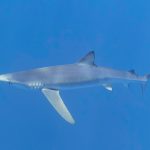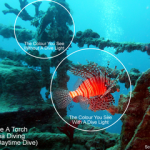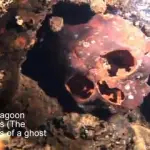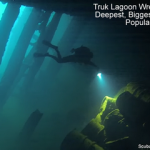
Scuba divers who love wreck diving, Scapa Flow includes some of the best wreck dives in the UK and Europe
If wreck diving is your passion or is the type of scuba diving you think will interest you, then Scapa Flow wrecks diving is a must.
Scapa Flow is in the Orkney Islands in Scotland at the most northern tip of the UK. Amongst the Scapa Flow wrecks there are eight main wrecks to dive that remain from the scuttled German fleet. The dive depths range from about 12 metres (40 feet) to about 45 metres (150 feet).
If you love wreck diving, another great place to dive is Truk Lagoon, which is best dive from a scuba diving liveaboard. You can check the latest and best deals on liveaboards using the following window:
What happened in Scapa Flow and where does it get its name?
The name Scapa Flow actually means ‘bay of the long isthmus.’ Where the word ‘isthmus‘ means ‘a narrow strip of land with sea on either side, forming a link between two larger areas of land.’ The area is an expanse of water of nearly 200 square miles (322 kilometres).
The Orkney Islands are made up of over 70 islands which make up the archipelago.
Scapa Flow is a body of water in the Orkney Islands in Scotland at the tip of the UK. The waters in Scapa are sheltered by the Islands that surround this body of water forming a natural harbour. It used to be one of the main anchorage spots of the Royal Navy.
There now lies many relics in these waters from British naval history.
Hailed ‘Europe’s best wreck-diving site‘ by the Independent.
How many ships were sunk in Scapa Flow?
The main ship wrecks that were sunk in Scapa Flow are all part of a German fleet. These wrecks were taken to Scapa at the end of the First World War in 1919.
The ships were held whilst the Armistice Negotiations were taking place in deciding their fate. In the end it was the German Comander Admiral Ludwig von Reuter, who scuttled the fleet.
His decision to scuttle them was his fear that the ships would be seized by the UK and used by allied forces against Germany. This happened on 21 June 1919.
He didn’t manage to scuttle all 74 of the ships. The British Navy managed to beach some of them before he was able to sink them. In the end 52 were sunk.
But 44 of these ships were raised for salvage after the war. This has left eight ship wrecks that scuba divers now spend time exploring.
These eight remaining ship wrecks include: SMS Dresden (Cöln Class Light Cruiser), SMS Cöln (Cöln Class Light Cruiser), SMS Karlsruhe (Class Cruiser), SMS Brummer (Mine Laying Cruiser), SMS Kronprinz Wilhelm (König class battlecruiser), SMS Markgraf (Battleship), SMS Konig (König class battleship) and V-83 (Destroyer).
There is also a German U-boat, which was sank before the above ships were scuttled. See video below.
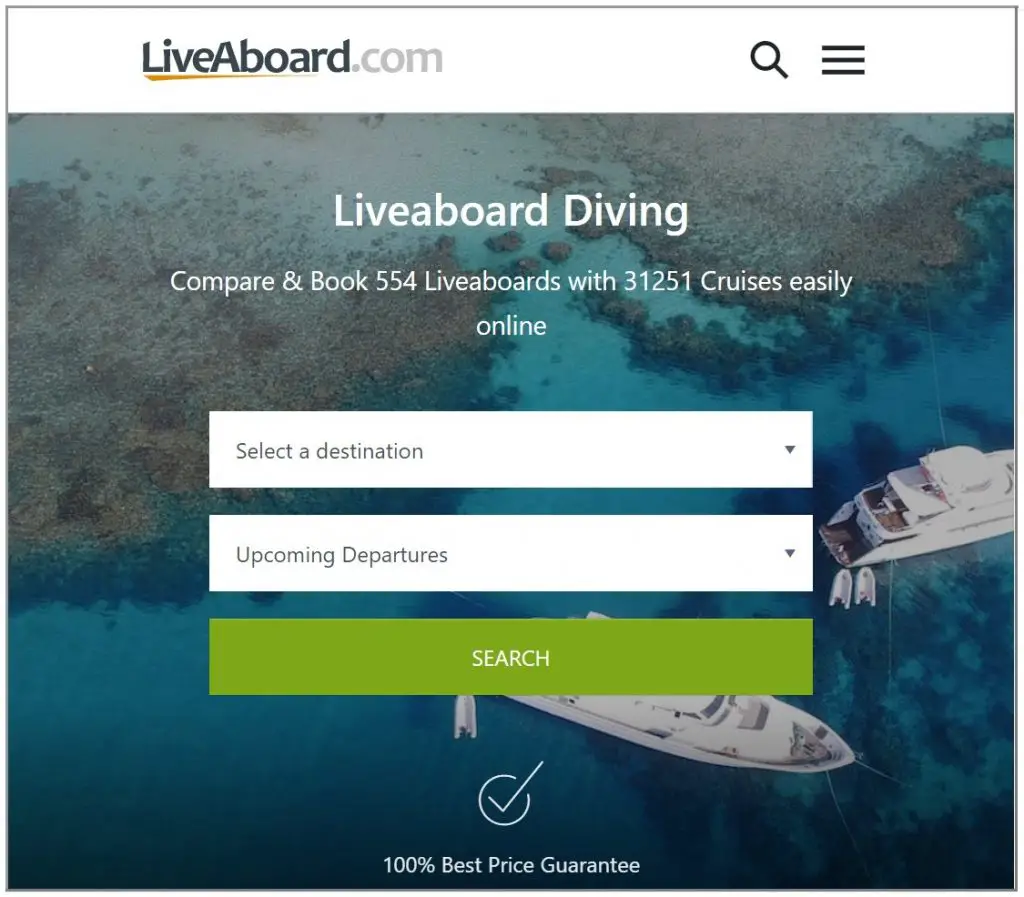
The Churchill Barrier
The Churchill Barrier (Named after Sir Winston Churchill who ordered the defenses), was a part of the naval defense. This was built to protect the UK’s naval fleet from German U-boats.
They were built in the 1940’s after HMS Royal Oak was sank in Scapa Flow by a German U-boat (U-47).
Some of the barriers are concrete causeways that link from the Orkney mainland to some of the smaller islands. However, some of the narrower passages on the Eastern side of Scapa were defended by sinking a number of block ships.
These block ships are also dive sites. They are in an area with faster moving currents. This area is known to have better visibility. The currents also attract a wide variety of wildlife.
What does it mean to scuttle a ship?
The term scuttling is used when a ship is sunk deliberately.
The usual way this is done is by blowing a hole in the hull of the boat. Thereby letting water in, which sinks the ship.
To allow the water into the hull, explosives would be set under the waterline. This was usually done from the inside of the ship. To make sure the water penetrated the whole of the ship, and to make sure it sank, all of the ships hatches leading from each section of the ship would be left open.
More detail about three ship wrecks sitting at the bottom of Scapa Flow
An ideal wreck for divers not wishing to dive too deep is the SMS Kronprinz Wilhelm. The majority of this immense wreck is in less that 30 metres (100 feet) of water. The top of the hull is standing is in just 12 metres (40 feet) of water.
SMS Kronprinz can make a good second dive to keep it shallow. Alternatively, this wreck can be dived by scuba divers who don’t hold deep diver certifications.
Shake-down dive in Scapa Flow before the deep dives – SMS Dresden
SMS Dresden is good for a warm up dive, as the bow of the wreck sits at 25 metres (82 feet).
SMS Dresden can be used as a diver’s shake-down dive. It’s a good dive for those who have not dived for a while or dived to depth. It’s always important when doing deeper dives to build yourself up before going deeper.
The stern of SMS Dresden sits at about 38 metres (125 feet) some 155 metres (510 feet) away from the bow.
Diving on this wreck is made easy as there are shot lines at the bow and the stern. This provides alternative starting points for the dive.
Another shake-down dive option in Scapa – SMS Karlsruhe
The third wreck is one that sits in 25 metres (82 feet) of water. This is SMS Karlsruhe.
This wreck has the whole of its starboard side sitting at 25 metres. With its port side at about 35 metres.
The good part about the SMS Karlsruhe wreck is you can swim along the length of the starboard section. Which is 112 metres in length (367 feet). So long as your air lasts, or your decompression stop time(s) is in line with your bottom time and air consumption.
To find out more about SMS Dresden and the other wrecks that lie waiting for divers at the bottom of Scapa Flow, can be found here.
One of Scapa Flow’s wrecks HMS Vanguard

Diving on HMS Vanguard is not permitted without permission. HMS Vanguar is a war grave. Which means it’s protected under Protection of Military Remains Act 1986.
Licences are granted by the MoD and are unlikely to be granted to others. These images are courtesy of Forces.net (Thank you Forces.net).
On 9th July of 2017 it had been 100 years since HMS Vanguard exploded and sank, with the loss of 843 lives. The explosion was caused by an accidental magazine exploding on the ship.
Images of Ship Wrecks in Scapa Flow Courtesy of Croydon BSAC Sub Aqua Club
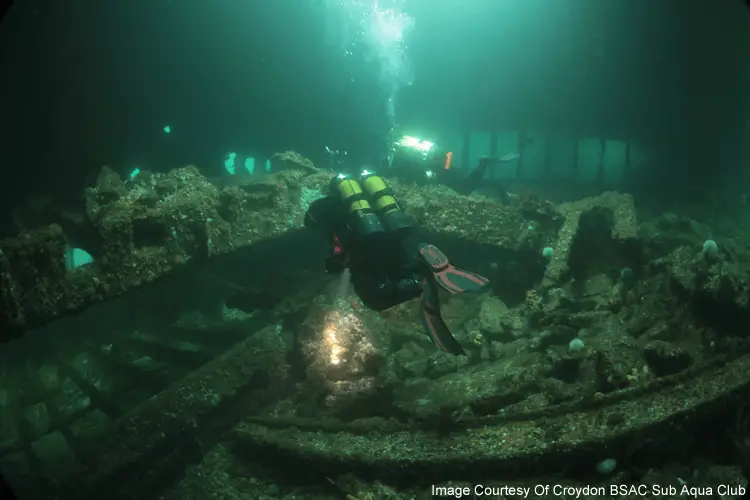
The above image is courtesy of Croydon BSAC Sub Aqua Club (Thank you Croydon BSAC and to Alan Glen for his write-up).
For Alan Glen, the writer of this article for Croydon BSAC’s trip to Scapa Flow in 2013, this was his 20th dive visit to Scapa Flow.
This stands testimony to why it’s the top wreck dive site in Europe, especially for those who love wreck diving.
I don’t think I’ve traveled to the same place and dived anywhere more than ten times (possibly the Farne Islands), let alone 20 times.
If you’re a wreck scuba dive fanatic, then Scapa Flow is the place to go.
Here’s another image courtesy of Croydon BSAC and Glen. What a fab picture and thank you for these great images:
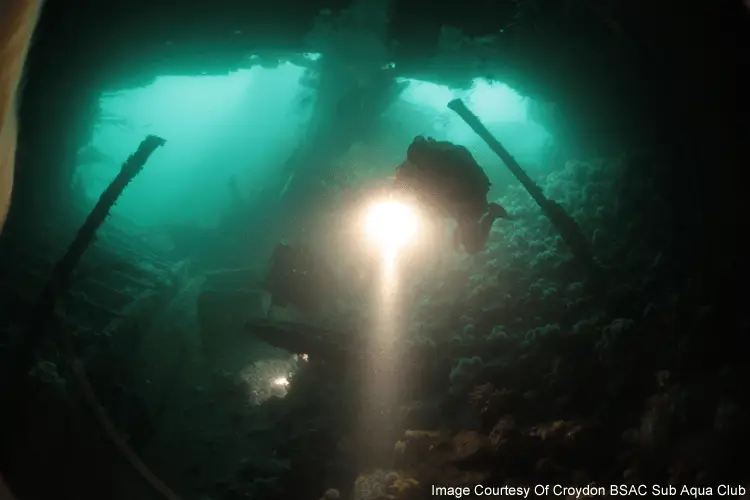
There’s more to Scapa Flow than just ship wrecks. Watch the video below which is of a German U-boat sank in 1918.
This is a video of UB-116 filmed by Christopher Smith
The UB-116 is a German U-Boat and the last U-boat sunk in World War I. UB-116 was filmed in Scapa Flow by Christopher Smith (Thank you Christopher).
The wrecked U-boat is quite broken apart which belies her fate. This vessel was blown up by British mines on 28th October 1918.
You’ll also see that for UK waters the water visibility is quite good.
How deep is Scapa Flow?
The seabed of Scapa Flow is a sandy bottom. At the deepest point it’s about 60 metres (200 feet). However, the majority of the seabed sits at around 30 metres (100 feet) deep.
Scapa Flow is not just about the ship wreck diving?
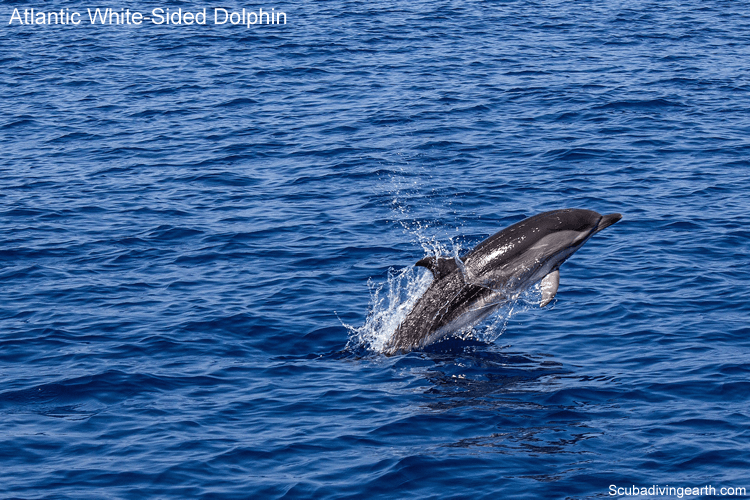
Scapa Flow is much more than simply wreck diving, as there is plenty of marine life there too.
Marine life includes the playful seals. Orkney is the breeding site for both the grey seal and common seal.
In the summer months there are a number of dolphin species seen there. These include Risso’s dolphin, the Atlantic white-sided dolphin (In the above image), white-beaked dolphins and the common dolphin.
Underwater you can see plenty of wrasse, conger eels, jellyfish, crabs, sea urchins, starfish, brittle stars and sponges.
What is water temperature of Scapa Flow?
The water temperature in Scapa Flow ranges from the coldest at 4°C (39°F) in April through to 14°C (57°F) in September.
It’s recommended to dive in a dry suit. Although in September you may wish to dive it in a semi dry instead. This does depend on the air temperature and the outside weather at the time though. Plus your personal tolerance to the cold.
More Reading: What is the difference between a drysuit and a semi dry suit?
I used to do most of my UK dives in a semi dry, which was fine for the first dive of the day. It was getting back in for the second dive when it got colder. This was especially true if the weather was wet and windy.
The visibility underwater in Scapa mostly ranges from 10 metres (33 feet) up to 30 metres (100 feet). The visibility will depend on the time of year and the state of the tides, where these are neaps or springs.
More Reading: At what temperature do I need a drysuit? (Drysuit temperature range)
How do you get to Scapa Flow and where to stay?
In your travel plan to scuba dive Scapa Flow, your ultimate destination on the Orkney Islands is Stromness, which is on the mainland Island and the largest of all the Orkney Islands.
If you already live in the UK and you prefer to drive, then driving is always a good option. Depending on where you live though, it is a long trip, as you have to drive to the tip of Scotland.
You have a number of choices of where to catch the ferry, which includes Aberdeen/Lerwick, Scabster or John O’Groats. John O’Groats is the closest and is a 45 minute journey to the Island from mainland UK.
The other option is to fly where your final destination airport is Kirkwall Airport, which is close to the town of Scapa. However, to dive you need to get across to Stromness.
Finally, you can catch the train and then transfer using the ferry too.
What’s the best way to dive on Scapa Flow?
You can dive on day boats, which operate out of Stromness.
In this small town there are two dive shops, The Dive Cellar and Scapa Scuba. You can book your trips through either of these two dive shops.
The alternative is to dive from a liveaboard.
The choice is yours. If you’d prefer to spend the evenings on land and see more of Stromness, you can book into a bed and breakfast. However, if you prefer to spend most of your time at sea, then a liveaboard is the best way to dive Scapa Flow.
Dive with confidence in Scapa
One thing that no scuba diver wants to happen is to get the bends or decompression sickness, as a result of a fast ascent. However, should anything like this go wrong, there is a hyperbaric chamber in Stromness.
After all the majority of the diving is deep diving, and where many of the divers will be doing decompression stop diving too. This is a technical diver’s dream.
Most divers dive will apply safe diving practices. However, even then accidents can happen. It’s therefore reassuring to have these re-compression facilities on hand nearby.
If you love tech diving you may want to dive the Maldives on a Maldives liveaboard with Tech diving support. Or how about choosing one of the Red Sea liveaboards for Tech Divers.
I hope you enjoyed this article about scuba diving amongst the wrecks In Scapa Flow
I’d love to hear from you. Tell us about your adventures of diving and snorkeling, in the comments below. Please also share your photos. Either from your underwater cameras or videos from your waterproof Gopro’s!
If you like Scapa Flow wreck diving, you’ll love diving Truk Lagoon wrecks too! Many of the wrecks in Truk or Chuuk Lagoon are deep wrecks.
If this article hasn’t answered all of your questions. If you have more questions either about snorkeling or scuba diving (or specifically about scuba diving amongst the wrecks In Scapa Flow), please comment below with your questions.
There will also be many more articles about scuba diving (and snorkeling) for you to read and learn about these fabulous sports.
Have fun and be safe!

